#Carcharodon carcharias
Explore tagged Tumblr posts
Text
youtube
The white shark (Carcharodon carcharias) is the largest predator fish in the world, however, the early life history and reproduction of this iconic shark is still poorly understood, in fact, no one has seen a white shark puppy in the wild, nonetheless, recent aerial observations made by drone off California, USA, have revealed the first images of a white shark puppy.
Footage done by wildlife filmmaker Carlos Gauna and biologist Phillip Sternes in July 2023, revealed seconds of a single pale pup, which apparently was shedding its embryonic layer. This record robusts the idea the coast of central California acts a birthing location for white sharks. This shark was stimated to reach 1.5 m in lenght. Many researchers believe white sharks are born farther out at sea, due the elusivity to find pups. This finding means they are likely to born in shallow waters.
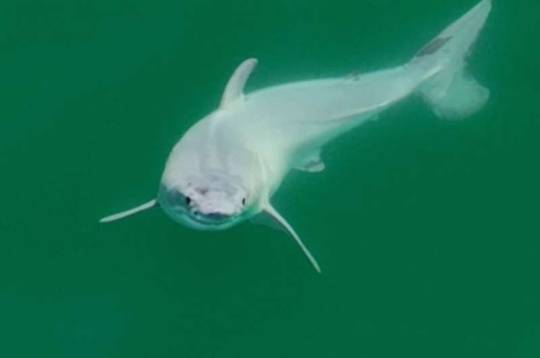

Photo: Carlos Gauna
Reference : Gauna & Sternes2024. Novel aerial observations of a possible newborn white shark (Carcharodon carcharias) in Southern California, Environmental Biology of Fishes
#white shark#carcharodon carcharias#biology#marine biology#pacific#california#science#bioblr#sciblr#scienceblr#marine science#Youtube
435 notes
·
View notes
Text



I’m so excited!!! I went to my local Brick store today. They had a shark suit guy plushie!! As someone that’s obsessed with sharks I had to have it! I got the perfect place of him on my shelf too!
#i love sharks#shark#sharks#shark autism#trans#transgender#trans pride#transisbeautiful#mtf#transgirl#girlslikeus#mtf hrt#maletofemale#transformation#trans women are beautiful#trans woman#trans women#trans women are women#trans women are amazing#transexual#mtf trans#this is what trans looks like#trans community#trans experience#trans feminine#Carcharodon carcharias#actually trans#trans is beautiful#Galeocerdo cuvier#Galeocerdo cuvier is my favorite!
157 notes
·
View notes
Note
If you go to iNaturalist, and look for great white sharks, there is a sighting and a series of photos in Turkish waters, in northwest turkey right below Bulgaria, of a piebald specimen
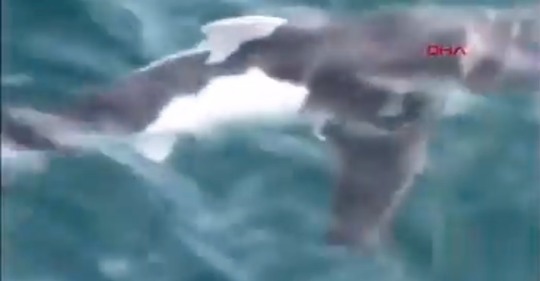
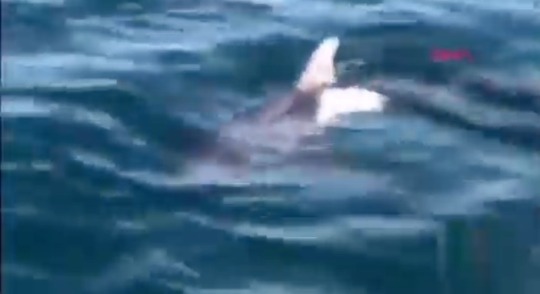
Thank you so much! I’m in love with the white fin!
745 notes
·
View notes
Text

Victor Grasso, "Death From Below / Great White Shark (*)". 2020, oil on board. B. 1977, Cape May Court House, NJ, USA (*) Carcharodon carcharias (Great White Shark).
#Victor Grasso#Death From Below#great white shark#2020#oil on board#american artist#self taught artist#oil painting#painting#art#half naked#woman#shark fin#fin#portrait#great#blue#waves#sea#ocean#deep blue sea#cloudy#grey#sky#Carcharodon carcharias#realism#magic realism#surrealism#figurative art#contemporary art
21 notes
·
View notes
Text

Repostober 21. More sharks from 2014
14 notes
·
View notes
Text


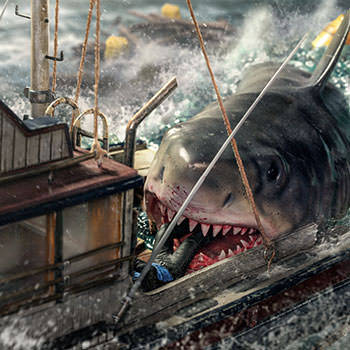
Spooktober Creature of the day: Jaws (1975-1987) #jaws #shark #greatwhite #greatwhiteshark #carcharodoncarcharias #spooktober #halloween #october
#jaws#shark#great white shark#great white#carcharodon carcharias#Spooktober#halloween#October#Spotify
19 notes
·
View notes
Text

Large sharks of the World art print poster. Available at cetek.etsy.com.
0 notes
Text
0 notes
Text
Cool Zoology Stories of 2024
Happy new year! As we head into 2025, here's a few fun zoology highlights from the last year.

The Iberian Lynx is no longer endgangered
Species Concerned: Iberian Lynx (Lynx pardinus)
Source: Here
Image Source: Here
The International Union for the Conservation of Nature (IUCN) is the organisation responsible for compiling information on the size and trends seen in species’ wild populations and assigning them a “conservation status” based on how threatened they are determine to be. There are three increasingly concerning categories a species may be sorted into (vulnerable, endangered or critically endangered, in that order,) and while species may be classified as increasingly threatened if their populations continue to decline they can also be raised to a less threatened category should their population increase. In the summer of 2024, the IUCN made an exciting announcement; based on an assessment carried out throughout 2023 the Iberian Lynx (the most threatened of the four lynx species, and among the world’s rarest wildcats) had done just that, being upgraded to vulnerable from endangered!
Easily distinguished from other lynxes by it’s the distinctive pair of “beard-like” fur tufts on its chin, the Iberian Lynx, as its name suggests, is found only in the southern Iberian Peninsula which stretches across Spain and Portugal. Its already small range has shrunk further due to rapid declines in its primary prey, the European Rabbit (Oryctolagus cuniculus), further aggravated by habitat loss, disease outbreaks, conflict with humans and the addition genetic pressures that species with small populations experience. By 2001 the species’ population had declined to as few 62 adults, but since then intensive efforts to increase the populations of European Rabbits, protect remaining Iberian Lynx populations, introduce captive-bred individuals and encourage land owners to reduce impacts on any lynx populations on their land has allowed for a steady increase – as of 2023 the population was believed to have risen to 648 adults, and members of this species have returned to long-vacant regions of their former range! While the Iberian Lynx remains threatened and continued efforts are needed to maintain these increases, the species’ new conservation status shows that these efforts are working, and that there may yet be hope for this beardy big cat’s future.

Big News on Baby Sharks!
Species Concerned: Great White Shark (Carcharodon carcharias)
Source: Here
Image Source: Here
Despite its large size, near-cosmopolitan distribution and status as easily one of the most famous and recognisable fish on earth, there’s a lot we don’t know about the Great White Shark. In particular, there are some major gaps in our understandings of the mating habits of adult Great Whites, and in the early development of their pups. This year, however, progress was made in filling some of these gaps; in April an article published in the journal Frontiers in Marine Science described activity within a “creche” of young (1-6 year old) Great Whites off the coast of California, demonstrating that (among other things) they moved between deeper and shallower coastal waters throughout the day and seemed to carefully position themselves within the water column in order to maintain a healthy body temperature and thereby facilitate growth and development (unlike many fish adult Great White Sharks are able to regulate their body temperature through metabolic activity much like mammals can, but it seems that younger individuals have a reduced ability to do so and are more reliant on environmental conditions to regulate their body temperatures. This is particularly exciting as an article published this January to another journal, Environmental Biology of Fishes critically examined footage recorded by wildlife photographer TheMalibuaArtist of a small, round-featured Great White Shark off also found near California’s coast that had an odd, pale film attached to its skin and concluded that (while it is possible that the film is the result of some previously undocumented disease or mutation) it may represent the first ever video footage of a newborn Great White Shark, with the film being debris that attached to the potential pup during live birth. The Great White Shark, despite its dreaded reputation, is itself classified as vulnerable by the IUCN, so gaining greater understanding of how members of these species live in their earliest years may prove invaluable in protecting wider populations!

The 200th Anniversary of the First Dinosaur Getting Named
Species Concerned: Megalosaurus (Megalosaurus bucklandii)
Source: Here
Image Source (excluding some...minor additions): Here
On February 20th 1824 the geologist and palaeontologist William Buckland became the first person to give a formal scientific name to a (non-avian) dinosaur, describing a set 160 million year old reptile-like bones found in Oxfordshire, England as “Megalosaurus”, which can be translated literally to “big lizard” (though is more often translated as the more dignified-sounding “great lizard.”) This means that this February marked the 200th anniversary of Megalosaurus getting its name and, in some ways, the beginning humanity’s long-standing love of and obsession with dinosaurs.
Based on the incomplete remains that had been discovered Buckland originally imagined Megalosaurus as being an enormous, slow-moving, lizard-like animal (kind of like an iguana crossed with an elephant.) However, further studies into the fossils of Megalosaurus and of numerous anatomically similar and therefore likely related animals have since demonstrated that it was a large, likely relatively fast-moving carnivorous biped, and a relative of modern birds (which, like Megalosaurus, are therapods.) Megalosaurus lived in what is now northern Europe throughout the mid-Jurassic period, while its closest relatives, the Megalosaurids, could also be found across Africa, Asia and North America and survived until the very end of the Jurassic. 17 years after Megalosaurus got its name it, alongside the early cretaceous ankylosaur Hylaeosaurus and the iconic spiky-thumbed ornithopod Iguanadon (all still imagined to be iguana-like at the time) would be recognised as relatives of one another based on similar anatomical features, becoming the first three genera to be classified as part of the clade that today contains all dinosaurs, the Dinosauria.

The Golden-Crested Helmetshrike was Photographed for the First Time
Species Concerned: Golden-Crested Helmetshrike (Prionops alberti)
Source: Here
Image Source: Here
Between December 2023 and January 2024 a collaborative team of researchers from the Democratic Republic of Congo and the USA set out to document the wildlife living in the Itombwe mountain region of South Kivu, DOC. Records of the species present in an around Itombwe are limited and every observation made during the trip was valuable, but perhaps the most exciting was the several sightings of the Yellow-Crested Helmetshrike, marking the first time this species has been formerly recorded in nearly 20 years and allowing for it to be photographed for the first time ever!
While several potential sightings have been reported elsewhere in central Africa, the Golden-Crested Helmetshrike is believed to be endemic to the DOC, making its home mainly in humid forests at high altitudes. Immediately distinguished from other birds in their range by the titular crests of bright yellow feathers that runs across their heads, members of this species live in small flocks and are extremely agile in flight, using their agility to hunt airborne insects. A lack of internationally available documented sightings of this species since the early 2000s had led to fears of its potential extinction, but as at least 18 individuals were sighted during the team’s expedition the species is now known not only to be surviving, but potentially to be more abundant within its home range than previously thought!

Frogs and Wolves got in on Pollination
Species Concerned: Izecksohn's Brazilian Tree Frog (Xenohyla truncata) and Ethiopian Wolf (Canis simensis)
Sources: Here and Here
Image Sources: Here and Here
Insects are by far the most important pollinators on earth (with some 80% of plants relying on insect-based pollination to reproduce,) but there are also many important vertebrate pollinators (most notably nectar-drinking bats and birds.) Pollinating vertebrates are important not only to wild plants but also to crops, wit mangos, durians and bananas all relying heavily on vertebrates to spread their pollen. 2024 saw two surprising new additions to the list of potential vertebrate pollinators; the unusual Izecksohn's Brazilian Tree Frog and the endangered Ethiopian Wolf!
Found only in Rio de Janiero, Brazil, Izecksohn's Brazilian Tree Frog is unusual among frogs in that while almost all frogs are carnivorous members of this species prominently feed on fruit and nectar. Like other nectar-feeding animals, as they move between flowers they carry pollen with them, making them the only known amphibian pollinators. The Ethiopian Wolf, native to high-altitude regions of Ethiopia, is among the rarest wild dogs on earth and has typically been thought of as a strict carnivore. In November of 2024, however, members of this species were recorded feeding on the flowers of the Red Hot Poker Plant (Kniphofia foliosa), transferring pollen on their muzzles in the process. While further studies are needed to determine quite how important either species is in pollination, it still suggests that the number of pollinating vertebrate species in the world may be greater than previously thought!
--------------------------
Have a great new year!
#Happy New Year!#zoology#biology#animal#animals#mammalogy#marine biology#ornithology#paleontology#wildlife#iberian lynx#great white shark#megalosaurus#golden-crested helmetshrike#ethiopian wolf
177 notes
·
View notes
Text
Round 3 - Chondrichthyes - Lamniformes
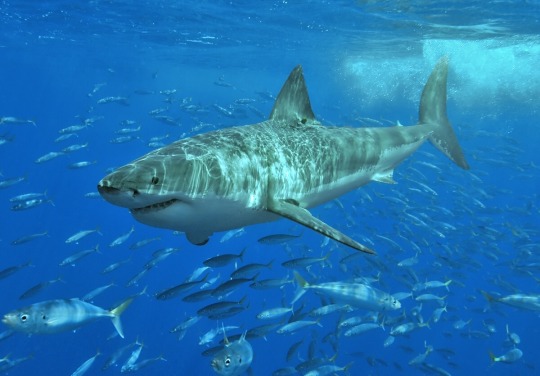



(Sources - 1, 2, 3, 4)
The Lamniformes are an order of sharks commonly known as “Mackerel Sharks.” They include the families Alopiidae (“thresher sharks”), Cetorhinidae (Basking Shark), Lamnidae (“white sharks”), Megachasmidae (Megamouth Shark), Mitsukurinidae (Goblin Shark), Odontaspididae (“sand tiger sharks”), and Pseudocarchariidae (Crocodile Shark).
Lamniformes are distinguished by possessing two dorsal fins, an anal fin, five gill slits, eyes without nictitating membranes, and a mouth extending behind the eyes. Lamnidae and Alopiidae are also distinguished for maintaining a higher body temperature than the surrounding waters: ie they are “warm-blooded”. Members of this order fill a diverse array of niches, from the apex predator Great White Shark (image 1), to the giant filter-feeder Basking Shark (image 2), to the deep sea ambush predator Goblin Shark (image 4).
Lamniformes are ovoviviparous, which means eggs develop and hatch in the uterus and continue to develop until the mother gives live birth to several young. Litters are usually small, consisting of 1-18 pups, depending on species. The unborn sharks participate in oophagy, in which they feed on ova: nutritious eggs produced by the mother specifically to feed the embryonic sharks before they are born. However, Odontaspididae will instead produce just two embryos, with the stronger embryo eating the other. After they are born, growth can be slow. For example, Sand Tiger Shark males reach sexual maturity at an age of 5 - 7 years and females reach maturity at about 7 - 10 years of age. Male Thresher Sharks reach sexual maturity between 7 and 13 years of age and females between 8 and 14 years. Male Great White Sharks take 26 years to reach sexual maturity, while the females take 33 years!
The Lamniformes arose in the Early Cretaceous. They reached their highest diversity during the Late Cretaceous, but severely declined during the K-Pg extinction. This is a somewhat diverse order, though many of its families only contain one remaining living species as the last of their kinds. Today, only 15 species of Lamniform remain.

Propaganda under the cut:
Great White Sharks (Carcharodon carcharias) are one of the longest lived Chondrichthyans, living up to 70 years or more! They are also one of the largest predatory sharks, with the largest preserved female specimen measuring 5.83 m (19.1 ft) long, though average females measure 4.6 to 4.9 m (15 to 16 ft) long and males 3.4 to 4.0 m (11 to 13 ft).
The Basking Shark (Cetorhinus maximus) and the Megamouth Shark (Megachasma pelagios) are two of the three living plankton-eating sharks. The Basking Shark is also the second largest shark species. They are slow-moving, gentle giants which migrate thousands of kilometers to seek the richest patches of zooplankton. Meanwhile, the Megamouth is much less active, instead slowly migrating vertically, spending the day deep beneath the sea and the night closer to the surface, tracking the movement of plankton in the water column.
The Shortfin Mako Shark (Isurus oxyrinchus) is the fastest known shark species, able to reach speeds of 74 km/h (46 mph) in bursts.
Salmon Sharks (Lamna ditropis) look like chibi-fied Great Whites. They often hunt in packs, sometimes of up to 30 to 40 individuals, to take down schools of fish such as, you guessed it, salmon.
“Globsters” are organic masses of flesh which have rotted in such a way to be unrecognizable, at least to the untrained eye. When they die, Basking Sharks tend to decompose in a way that they lose most of their lower jaw, dorsal, and caudal fins first, making them often resemble the extinct plesiosaurs! This was the case of the Zuiyo-maru Carcass, a photo of a very plesiosaur-looking globster which was passed around on the early internet as evidence that the prehistoric creatures were still living in the ocean.
The Porbeagle (Lamna nasus) has been observed engaging in play behavior: pushing floating objects around, repeatedly wrapping and unwrapping themselves in kelp, chasing each other, and reacting with curiosity to novel objects such as anglers’ balloon floats.
The deep-sea Goblin Shark (Mitsukurina owstoni) is often depicted with its highly protrusible jaws hanging out, but these jaws are usually not protruding. When the shark is pulled up from the water, dead, the muscles that typically hold the jaws in place relax and allow the shark’s jaws to protract. For years, the only images we had of this shark were dead specimens with protruding jaws. With modern technology like ROVs, we can now observe these sharks alive in their own environment, with their jaws locked firmly in place (image 4). As slow-moving ambush predators, Goblin Sharks snatch up prey by rapidly extending their jaws without needing to move their bodies much. Their long snouts are covered with ampullae of Lorenzini that enable them to sense minute electric fields produced by nearby prey.
Crocodile Sharks (Pseudocarcharias kamoharai) were responsible for damaging deep sea fiberoptic cables when the technology was first deployed in 1985. They tried to help and now look at us. We have anxiety.
The extinct, Late Cretaceous Aquilolamna milarcae, commonly called the “Eagle Shark” has been tentatively assigned to the Lamniformes. This unique shark’s winglike pectoral fins were so long that the shark was overall wider than it was long, akin to a manta ray.
Undoubtedly the most famous extinct Lamniform is Otodus megalodon, which lived from the Early Miocene to the Early Pliocene and was one of the largest predatory sharks to have ever lived.
Thresher Sharks are popular big-game sport fish, and are hunted commercially for their meat, livers (for shark liver oil), skin (for shagreen) and fins (for use in delicacies such as shark-fin soup). All three species are listed as vulnerable on the IUCN endangered species list. Basking Sharks have long been a commercially important fish as a source of food, shark fin, animal feed, and shark liver oil. They are endangered. Mako fishing is a prominent sport fishing activity around the world. As one of the fastest species in the ocean, they offer acrobatic flips, fast runs, and strong fights, which all greatly entertain anglers. They are an endangered species. Sand Tiger Sharks are a highly prized food item in the western northern Pacific, Ghana, India, Pakistan, and Japan, and they are fished for their hide, fins, and liver oil (used in cosmetic products such as lipstick) off North America. They are also a popular sport fish in South Africa and some other countries. They are critically endangered. How are people getting away with killing and selling parts of endangered species? Because these endangered species are “just fish”, and unfortunately, controls on fishing are not exactly sufficient. The best way to stop this overexploitation is to stop the high demand for it.
#literally I can not find a good clear photo or gif of Deep Blue where she is not being harassed by humans :/#it is a wonder this shark has not a attacked anyone yet to be totally honest#I wanted a good size ref but Like Blease Stop Touching Wildlife#Round 3#Animal Polls#chondrichthyes
92 notes
·
View notes
Text

Great white shark (Carcharodon carcharias), Common thresher (Alopias vulpinus), Shortfin mako (Isurus oxyrinchus), Porbeagle (Lamna nasus), Basking shark (Cetorhinus maximus)
Fishes of the World. Written by Hans Hvass. Illustrated by Wilhelm Eigener. Originally published in 1964.
Internet Archive
#marine life#fish#cartilaginous fish#sharks#mackerel sharks#great white sharks#thresher sharks#common thresher#shortfin mako shark#porbeagles#basking sharks#Wilhelm Eigener
245 notes
·
View notes
Text
Animal of the day for October 29: Great White Shark (Species Carcharodon carcharias)

The largest carnivorous shark, Great Whites travel hundreds of miles every day across the vast ocean in search of food. Great White Sharks have the ability to alternate between warm-blooded and cold-blooded metabolisms (heterothermy), which allows them to survive long periods without eating, or to explore colder waters. This would have likely given Great White Sharks and their kin an edge against other large sharks that existed, such as Alopias grandis or Hemipristis serra.
#animal of the day#october 29#october#great white shark#fish#cartiliginous fish#sharks#pacific ocean#indian ocean#atlantic ocean#southern ocean#australia
56 notes
·
View notes
Text

A fossilized shark tooth of a great white shark, or Carcharodon carcharias from the Pisco Formation in Sacaco, Peru. This Pliocene aged great white shark tooth shows nice shades of blue colors known from this deposit.
#fish#shark#chondrichthyan#fossils#paleontology#palaeontology#paleo#palaeo#carcharodon#great white shark#pliocene#cenozoic#prehistoric#science#paleoblr#ホホジロザメ#カルカロドン#ネズミザメ科#サメ#化石#古生物学
44 notes
·
View notes
Note
trick or treat
Watch out-- you got a great white shark (Carcharodon carcharias)!
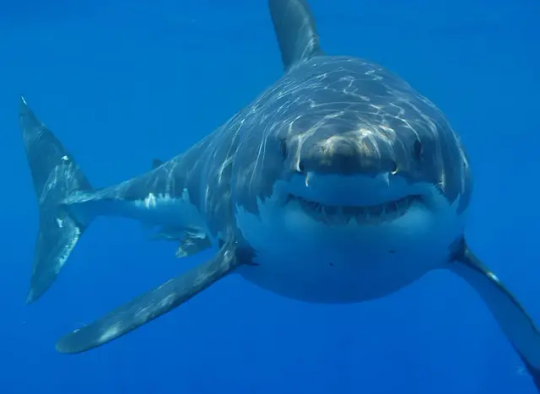
52 notes
·
View notes
Text
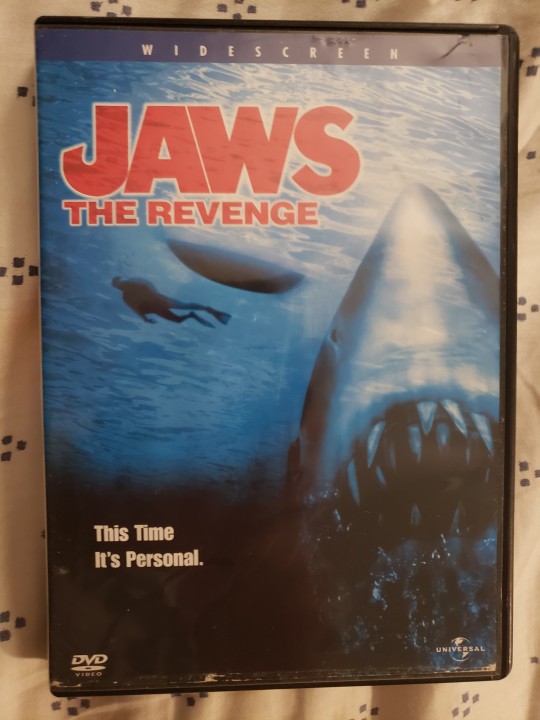
Now showing on DuranDuranTulsa's Creature Feature...Jaws: The Revenge (1987) on classic DVD 📀! #movie #movies #horror #scifi #monstermovies #creaturefeature #jaws #shark #greatwhite #greatwhiteshark #carcharodoncarcharias #jawstherevenge #jaws4 #lorrainegary #MichaelCaine #LanceGuest #mariovanpeebles #JudithBarsi #KarenYoung #mitchellanderson #dvd #80s #durandurantulsa #durandurantulsascreaturefeature
#movies#movie#horror#scifi#monster movies#creature feature#shark#great white#great white shark#carcharodon carcharias#jaws#jaws the revenge#lorraine gary#lance guest#mario van peebles#Michael Caine#judith barsi#Karen Young#Mitchell Anderson#80s#dvd#duran duran tulsa's creature feature#duran duran tulsa#Spotify
5 notes
·
View notes
Text
Q: what do you think/ feel about the elemental realm?

[sisters Maria and Estela, Côte d'Ivoire shark shamanesses, yanyan Aje.]
Ocean, n. A body of water occupying about two-thirds of a world made for man — who has no gills. Ambrose Bierce, The Unabridged Devil's Dictionary.
I spend a lot of time thinking about the sea, which is itself the most elemental realm those mortals, with no training or interest in the esoteric, will ever experience. We can only survive under its surface for minutes, sometimes seconds, without artificial assistance. It is the source of all life and utterly indifferent to humanity and our narcissistic need to always be the Chosen Ones.
It’s no mistake that the Inuit placed Sedna, their creator, and her home where the dead go, Adlivun, not up in the sky or deep under the earth but at the bottom of the ocean. Shamans, if they wished to petition Sedna, had to travel to the ocean’s floor and comb out Sedna’s long hair in order to be granted her favor.
Of all the spirits that swim, none is so dear to me as Carcharodon carcharias, that which we call the great white shark. My first spirit guide came in the form of Big Blue (a pregnant great white). I wrote this poem earlier today, thinking about the sea as an elemental realm. What I appreciate about poetry is that it allows me to speak my own truth in ways that fall flat in my prose. To give oneself up to the briny deep, as they say, is also a shamanic experience.
But the language of sharks is difficult enough to master. Few try. Few can boast, without pheromones, or La Mer's occult craft, that they grok a gill flap's flutter; most basic sound in their ten-million year old tongue. Their poems unfold in waves, music few of us No-gills can fathom. I told that joke once to a Queen Mum, a mystic Itchy Mouth, who chortled. Get a Queen Mum to laugh, love, and the Seven Seas are yours until, for a bowl of soup, ten-million years are snuffed out. Just like that: going numb in the surf, calling and ... Stand on the shores of all the seas. Call. None will answer. None.


26 notes
·
View notes